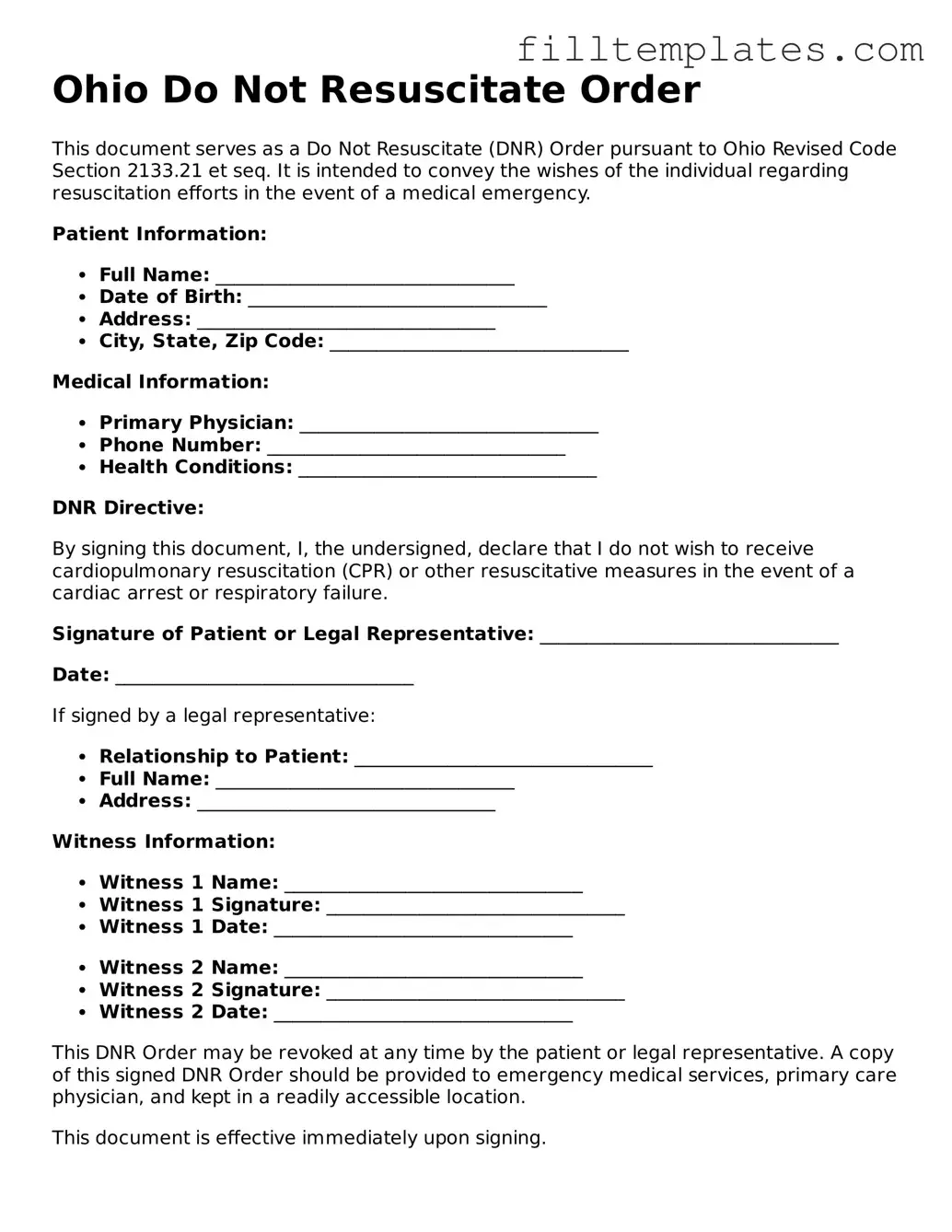Ohio Do Not Resuscitate Order
This document serves as a Do Not Resuscitate (DNR) Order pursuant to Ohio Revised Code Section 2133.21 et seq. It is intended to convey the wishes of the individual regarding resuscitation efforts in the event of a medical emergency.
Patient Information:
- Full Name: ________________________________
- Date of Birth: ________________________________
- Address: ________________________________
- City, State, Zip Code: ________________________________
Medical Information:
- Primary Physician: ________________________________
- Phone Number: ________________________________
- Health Conditions: ________________________________
DNR Directive:
By signing this document, I, the undersigned, declare that I do not wish to receive cardiopulmonary resuscitation (CPR) or other resuscitative measures in the event of a cardiac arrest or respiratory failure.
Signature of Patient or Legal Representative: ________________________________
Date: ________________________________
If signed by a legal representative:
- Relationship to Patient: ________________________________
- Full Name: ________________________________
- Address: ________________________________
Witness Information:
- Witness 1 Name: ________________________________
- Witness 1 Signature: ________________________________
- Witness 1 Date: ________________________________
- Witness 2 Name: ________________________________
- Witness 2 Signature: ________________________________
- Witness 2 Date: ________________________________
This DNR Order may be revoked at any time by the patient or legal representative. A copy of this signed DNR Order should be provided to emergency medical services, primary care physician, and kept in a readily accessible location.
This document is effective immediately upon signing.
